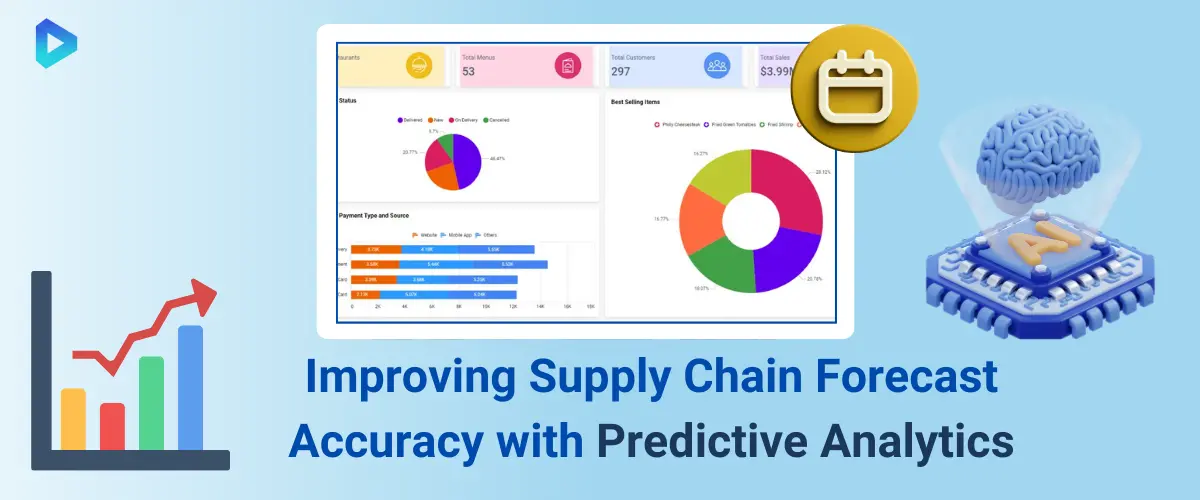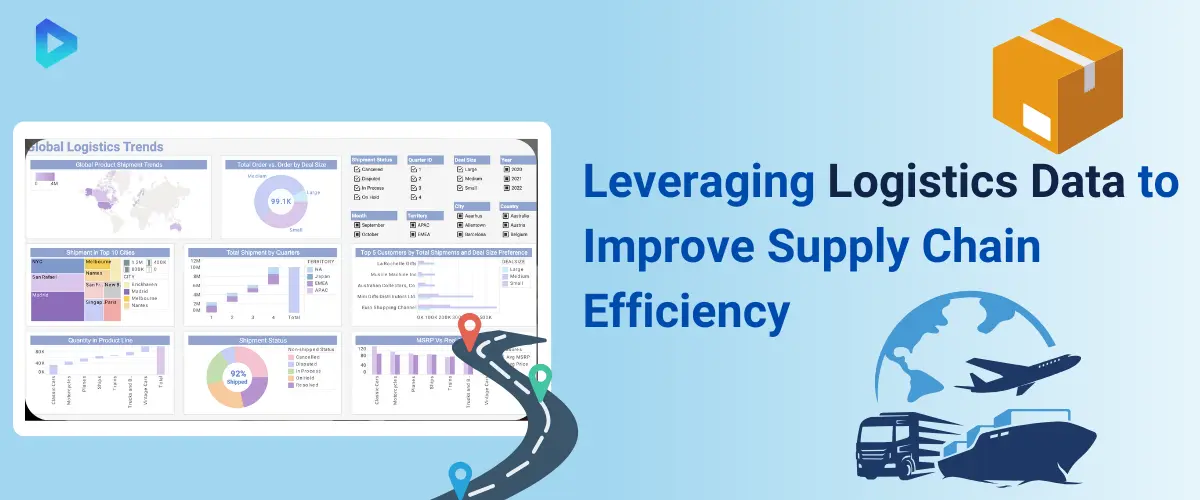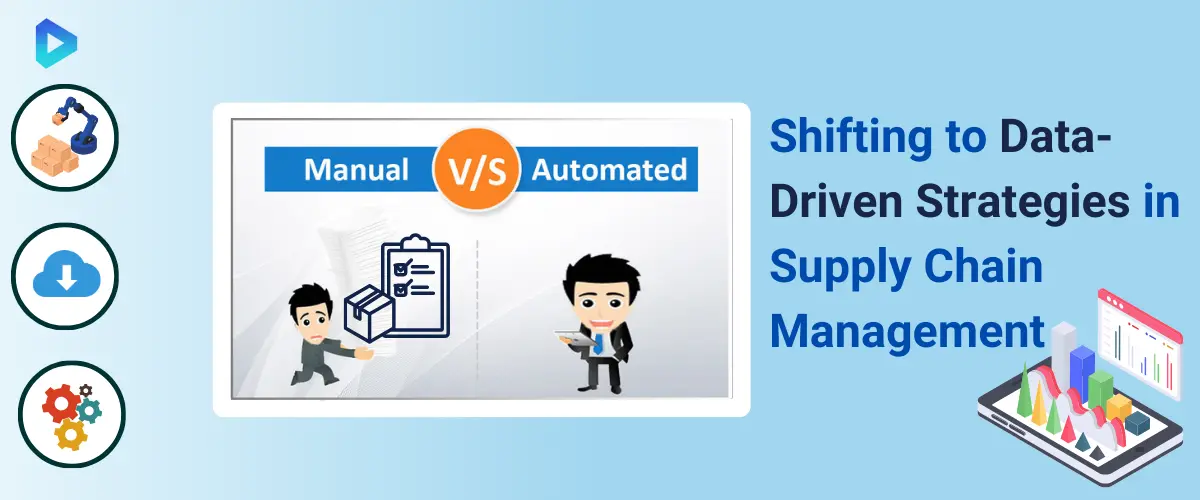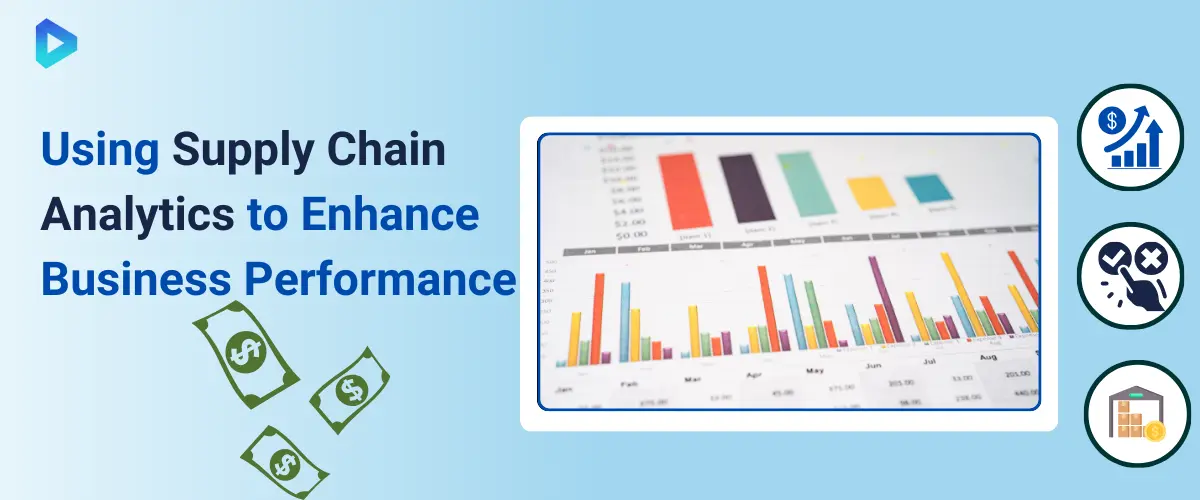Supply chain analytics is a game-changer for businesses looking to enhance their operational efficiency and reduce costs. By leveraging data-driven insights, companies can gain a clearer understanding of their supply chain performance, identify bottlenecks, and make informed decisions. Whether you're new to analytics or seeking to refine your approach, getting started with supply chain analytics involves understanding key data sources, selecting the right tools, and applying the insights to optimize operations. This guide will take you through the key steps to successfully implement supply chain analytics and enhance your business results.
Leveraging Predictive Analytics in Supply Chain for Better Forecasting
Predictive analytics enables better supply chain forecasting for efficient operations.

How Predictive Analytics Enhances Supply Chain Efficiency
Predictive analytics helps organizations anticipate demand, manage inventory, and reduce lead times. By analyzing historical data, supply chain managers can forecast future needs, optimize resources, and plan accordingly. This enhances the efficiency of the entire supply chain, minimizing delays and reducing costs. With the ability to identify trends, businesses can respond proactively, improving overall customer satisfaction.
Key Tools for Implementing Predictive Analytics in Supply Chain
Effective tools such as machine learning algorithms and data visualization software play crucial roles in predictive analytics. Platforms like Tableau, IBM SPSS, and SAP Integrated Business Planning are commonly used. These tools allow for accurate forecasting by processing large volumes of data and generating actionable insights. They also facilitate the integration of real-time data, helping companies to make quick adjustments and stay ahead of market shifts.
Best Practices for Predictive Supply Chain Analytics
To maximize the benefits of predictive analytics, businesses should adopt key best practices. Start by collecting quality data and ensuring its accuracy. Regularly update predictive models with the latest data to maintain accuracy. Involve cross-functional teams in the analytics process to get insights from various departments, such as procurement and logistics. Lastly, monitor the results and adjust your strategy as needed, leveraging predictive insights to drive continual improvement in supply chain performance.
Importance of Data Analytics in Supply Chain Management
Data analytics drives strategic decisions in supply chain management for enhanced efficiency.

Benefits of Data Analytics in Supply Chain Processes
Data analytics provides critical insights that streamline supply chain processes. With data-driven decisions, businesses can optimize inventory levels, minimize waste, and improve logistics. By analyzing trends, companies can forecast demand more accurately, reducing the risk of stockouts or overstocking. Additionally, data analytics helps in identifying bottlenecks and inefficiencies, which supports continuous improvement across the supply chain. Ultimately, these benefits lead to cost savings and improved customer satisfaction.
Essential Data Analytics Tools for Supply Chain
Several tools are essential for effective data analytics in supply chain management, including Power BI, SAP HANA, and Tableau. These platforms enable businesses to visualize complex data, identify patterns, and make informed decisions. Data analytics tools help supply chain professionals track real-time metrics like inventory turnover and lead times, ensuring quick responses to changing conditions. The right tools can transform raw data into actionable insights, fostering agility and resilience in the supply chain.
Integrating Data Analytics into Supply Chain Management
Integrating data analytics into supply chain management involves aligning data collection, analysis, and reporting with business goals. Start by establishing key performance indicators (KPIs) that align with your strategic objectives. Then, make sure to collect data from all critical sources like suppliers, inventory systems, and customer orders. Regularly review analytics reports to make timely adjustments and stay aligned with market trends. Integrating this data offers a comprehensive view, enabling proactive decision-making and strengthening supply chain resilience.
Exploring Logistics Data Analytics in Supply Chain Management
Logistics data analytics drives smarter, faster decisions across supply chain operations.

How Logistics Data Analytics Streamlines Operations
Companies can leverage logistics data analytics to streamline and enhance their supply chain operations. By leveraging data, businesses can identify inefficiencies, improve route planning, and reduce transportation costs. With analytics, businesses can monitor inventory in real-time, track shipments, and forecast demand with precision. This level of insight helps streamline operations, enhance productivity, and minimize delays. Overall, data analytics supports smoother, more efficient logistics processes, which boosts customer satisfaction and reduces costs.
Key Metrics for Logistics and Supply Chain Analysis
To get the most out of logistics data analytics, it’s essential to focus on key performance metrics. Critical metrics include order fulfillment rate, inventory turnover, freight costs, and on-time delivery rate. Monitoring these indicators provides valuable insights into logistics efficiency and helps identify areas for improvement. By consistently tracking these metrics, companies can adjust strategies to improve warehouse operations, optimize transportation, and enhance customer service levels. Data-driven metrics support continuous improvement and enable responsive decision-making in supply chain management.
Improving Logistics Efficiency with Data Analytics
Enhancing logistics efficiency depends on deriving actionable insights from data analytics. With analytics tools, companies can forecast demand, plan resources, and manage inventory better. Additionally, data analytics enables real-time monitoring of logistics networks, allowing quick responses to disruptions or delays. Integrating predictive analytics helps companies anticipate issues and prevent them before they arise, leading to smoother operations. By focusing on efficiency, businesses can lower costs, improve delivery times, and increase overall supply chain resilience.
Data-Driven Approaches in the Supply Chain
Leveraging data analytics for streamlined, efficient supply chain management.

Using Data to Optimize Supply Chain Performance
Optimizing supply chain performance relies heavily on data-driven insights. By analyzing data, companies can identify patterns and trends, allowing them to forecast demand, manage inventory more effectively, and enhance logistics processes. Additionally, data analysis supports better decision-making in vendor management, procurement, and risk management. Optimizing these areas reduces costs and improves delivery accuracy and customer satisfaction. Utilizing data in these ways helps companies respond proactively to market changes, driving efficiency and competitiveness.
Building a Data-Driven Supply Chain Strategy
Creating a data-driven supply chain strategy starts with setting clear objectives and identifying key data sources. These can include transactional data, customer behavior insights, and external market data. With a strategic focus, organizations can integrate data analytics tools to monitor supply chain activities, make data-informed adjustments, and achieve higher operational precision. Data-driven strategies also encourage collaboration between departments, leading to enhanced visibility across the entire supply chain. Ultimately, a well-structured approach to data utilization drives agility, resilience, and business growth.
Overcoming Challenges in Supply Chain Data Management
Managing data in the supply chain poses challenges, including data silos, inconsistent data formats, and security concerns. Overcoming these challenges involves implementing standardized data collection and storage practices, as well as investing in secure, centralized data platforms. Additionally, training employees to understand and use data responsibly can help prevent data mishandling. Effective data management not only mitigates risks but also enhances the quality and accessibility of insights. By addressing these challenges, businesses can fully leverage the power of data to drive supply chain success.
Enhancing Business Management Through Supply Chain Analytics
Using analytics is key to making informed business decisions and streamlining supply chain processes.

The Impact of Analytics on Business Decision-Making
Supply chain analytics provides data-driven insights that are invaluable for business decision-making. By interpreting analytics, businesses can identify cost-saving opportunities, enhance operational efficiency, and predict future trends. Analytics helps decision-makers understand customer demand, optimize stock levels, and refine logistics processes, enabling them to make more accurate, timely choices. These informed decisions drive business growth, improve customer satisfaction, and give companies a competitive edge in the market.
Analytics Tools for Better Business and Supply Chain Management
Numerous advanced tools are available to improve business and supply chain management using analytics. Solutions such as Power BI, Tableau, and SAP Analytics Cloud allow businesses to easily visualize and interpret complex data sets. These tools enable managers to monitor key performance indicators (KPIs), track inventory, and optimize delivery routes in real-time. By utilizing these analytics tools, businesses can gain a comprehensive understanding of their supply chain operations, leading to improved productivity and operational transparency.
Integrating Supply Chain Analytics into Business Strategy
Incorporating supply chain analytics into business strategy enhances efficiency and boosts profitability. Organizations can begin by identifying key areas where analytics can provide insights, such as demand forecasting, inventory management, and supplier performance. By establishing a framework for continuous data analysis, companies ensure that the latest data always inform strategic decisions. Integrating analytics into strategy helps companies adapt to changing market conditions, minimize risks, and sustain long-term growth.





No comments:
Post a Comment